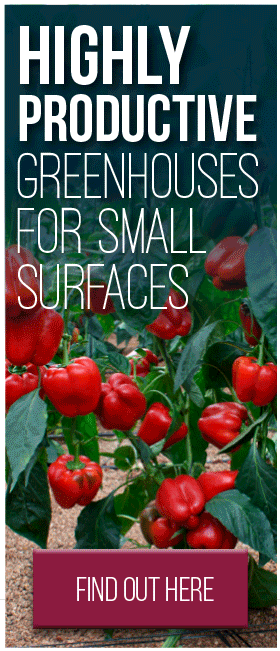One of the main characteristics of greenhouses is the use of plastic as cladding material, except for Dustch greenhouses or Venlo type using glass. In the market there are different plastics materials to use in greenhouses, and depending on several factors we will choose either.
Factors to consider to choose a plastic greenhouse:
Thermicity:
The purpose of the plastic cover is to provide the greatest possible internal radiation greenhouse environment and conserve heat energy provided by the solar radiation inside. Therefore, to a good covering material has a high solar radiation transmission, low permeability to long wave infrared radiation (heat radiation) and low heat transfer.
There are additives that improve the thermal behavior of plastic, minimizing radiation losses of long wavelength.
Photosynthetic efficiency:
The higher the transparency of the plastic to photosynthesis level of solar radiation will be, the more optimal will be their use as a cover, as it will allow the development of photosynthesis reactions, without agricultural production is impossible.
Lightness:
Light cover material requires a simpler support structure, so that the lightness of plastic implies a lower cost of the greenhouse structure.
Physical Resistance:
Plastic cover must have physical endurance to not tear if subjected to reasonable external forces such as wind or rain, the impact, in the case of hail and be tensed and stretched without deformation or breakage.
Duration of plastics:
It is determined by the reduction of radiation transmission, which is generally related to plastic sensitivity to the UV rays action, although there are additives to overcome this drawback which extend the useful life of the material. The lifespan of a plastic, if its handling is good and is not subject to unfavorable conditions, is between 3 and 5 years.
Anti-drip properties:
Its composition, the polymers of the plastics may have hydrophobic radicals (CH groups, in case of PE and EVA) or hydrophilic (-COOH, in case of PMMA). This feature can be decisive for the condensate produced in greenhouses covers, so it is desirable that plastic cause the least possible leakage. Thus, plastics that contain hydrophilic radicals are more interesting, because they maintain the condensate on its surface, avoiding dripping on plants. There are anti-drip additives or tensoactives that change the hydrophobic nature of the links CH.
No dust retention:
Some plastics, for their chemical compositions, have the characteristic of having electric charge on their surface, so they can collect dust that causes a decrease in transparency of solar radiation of plastic, so it is a feature to be considered to use as roofing material.








